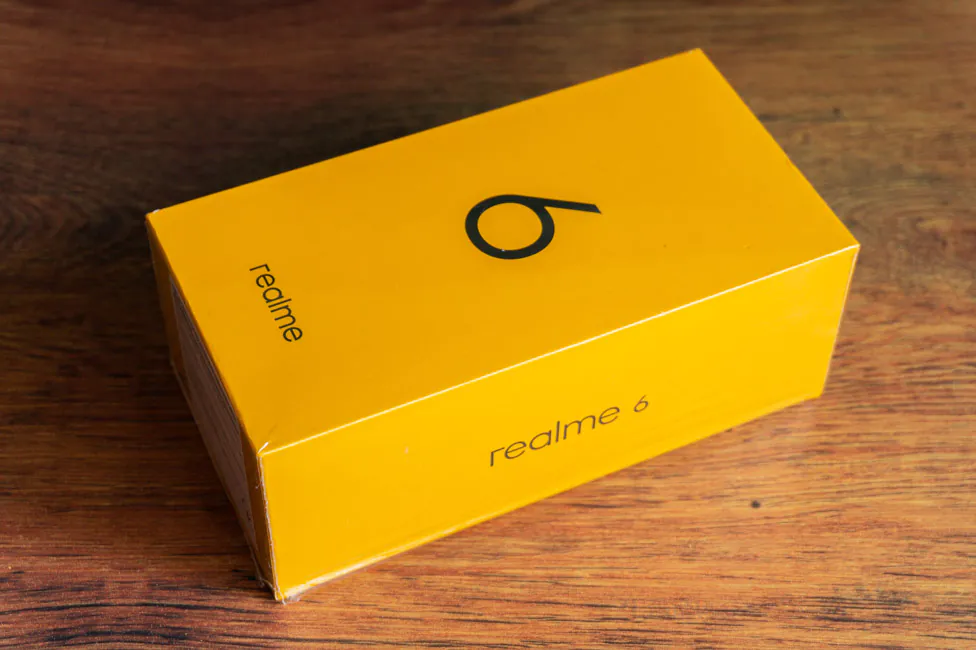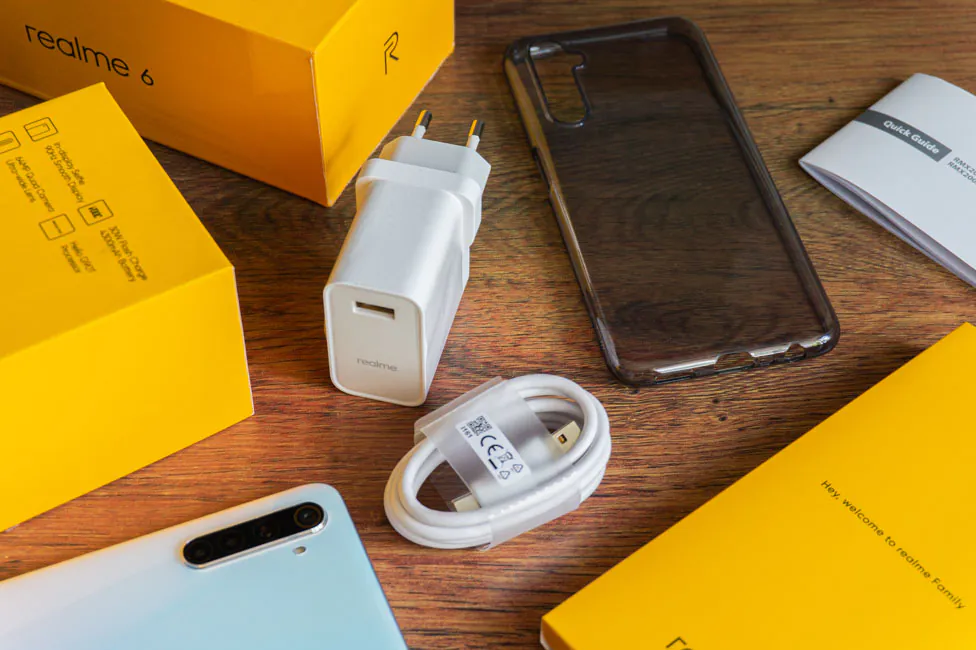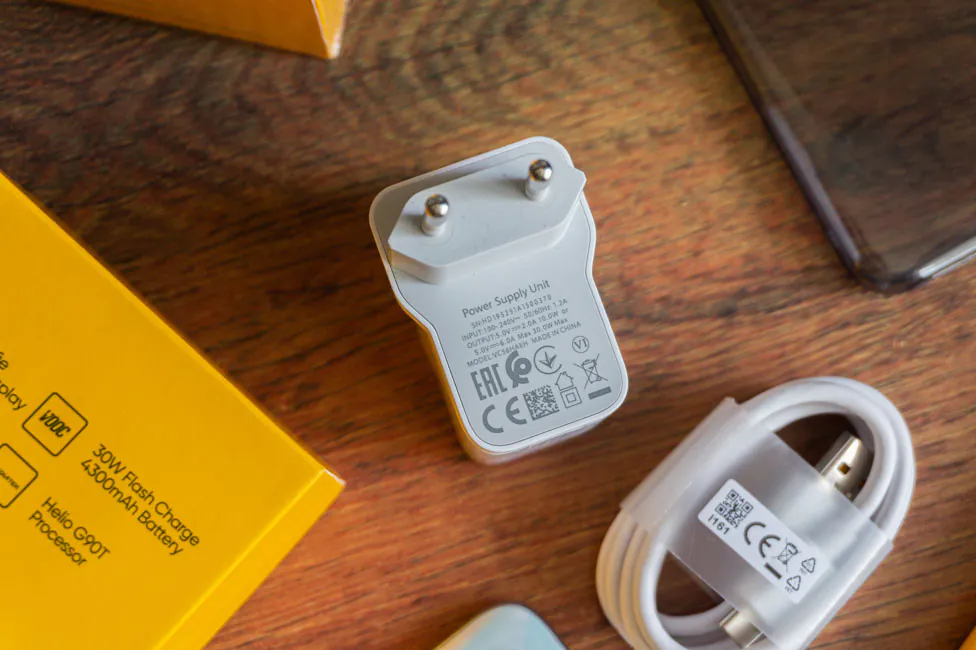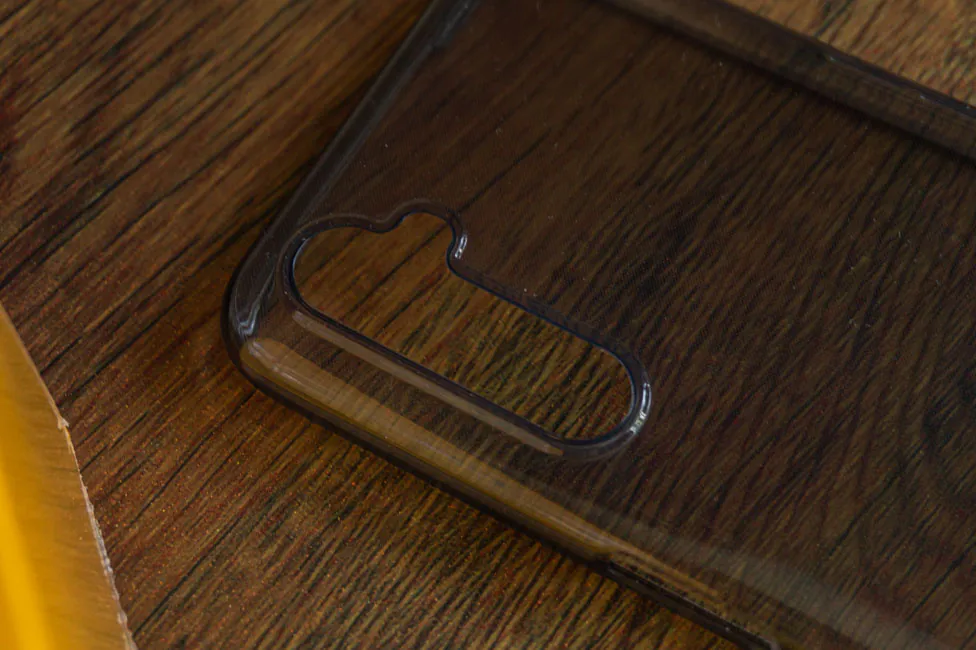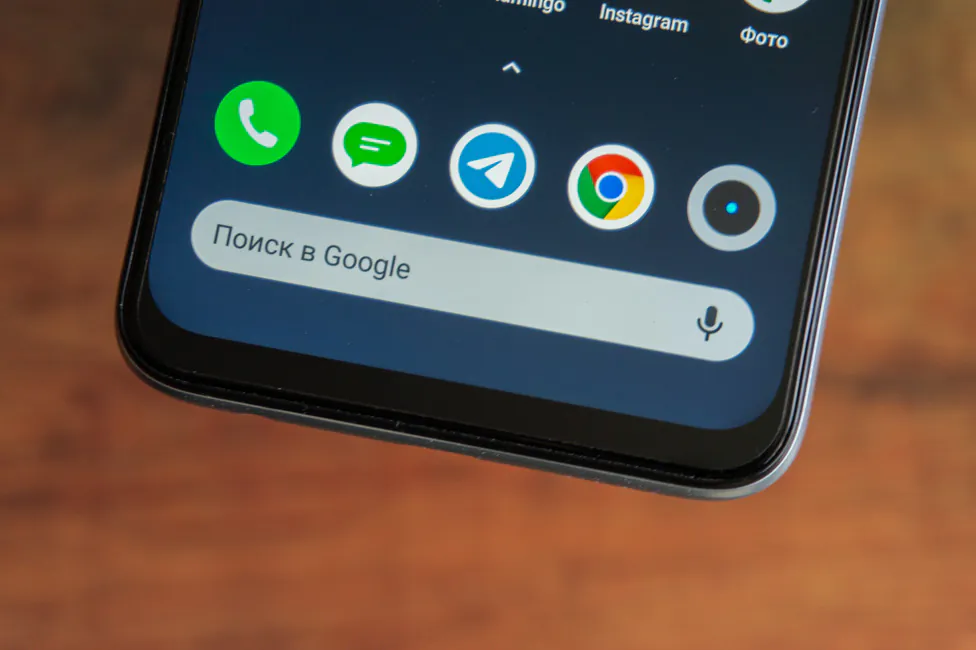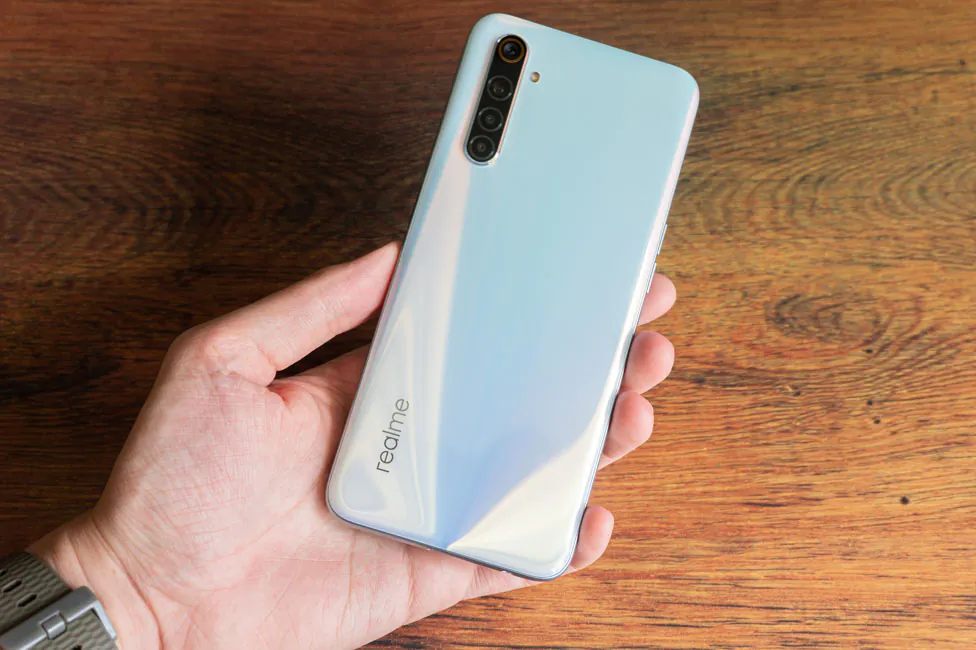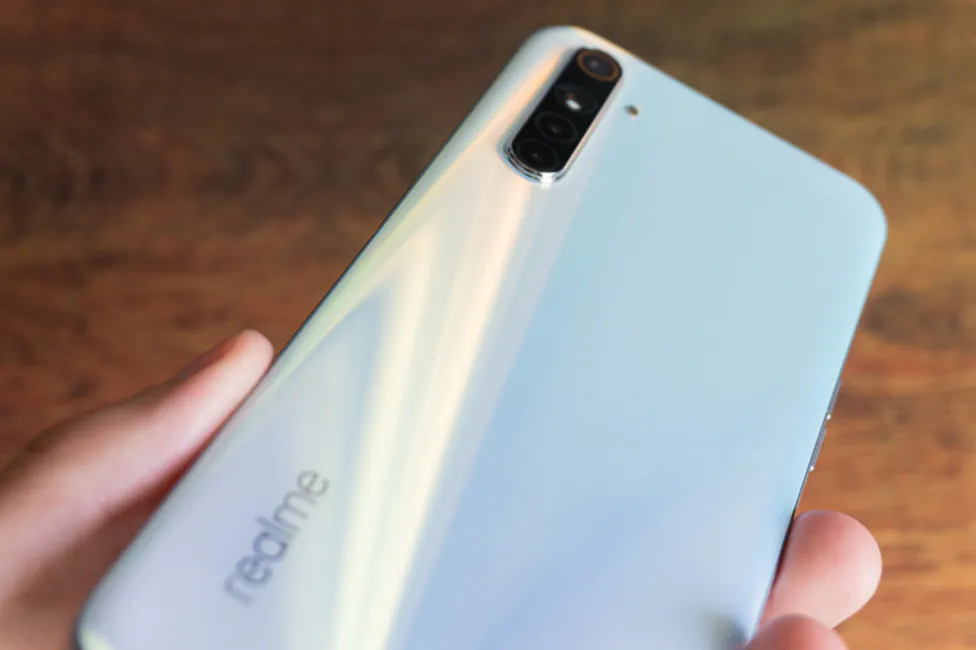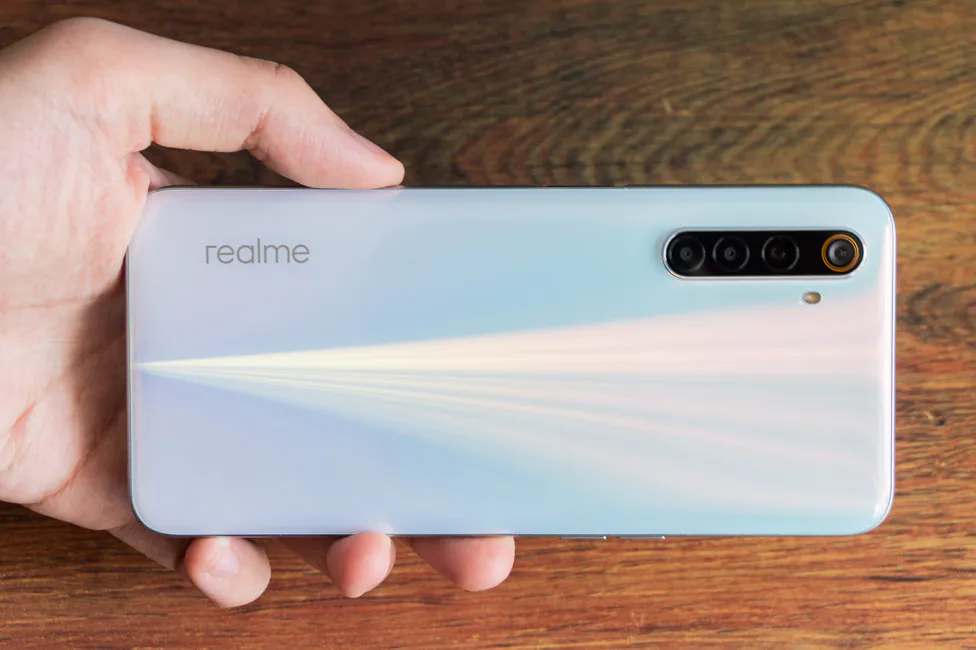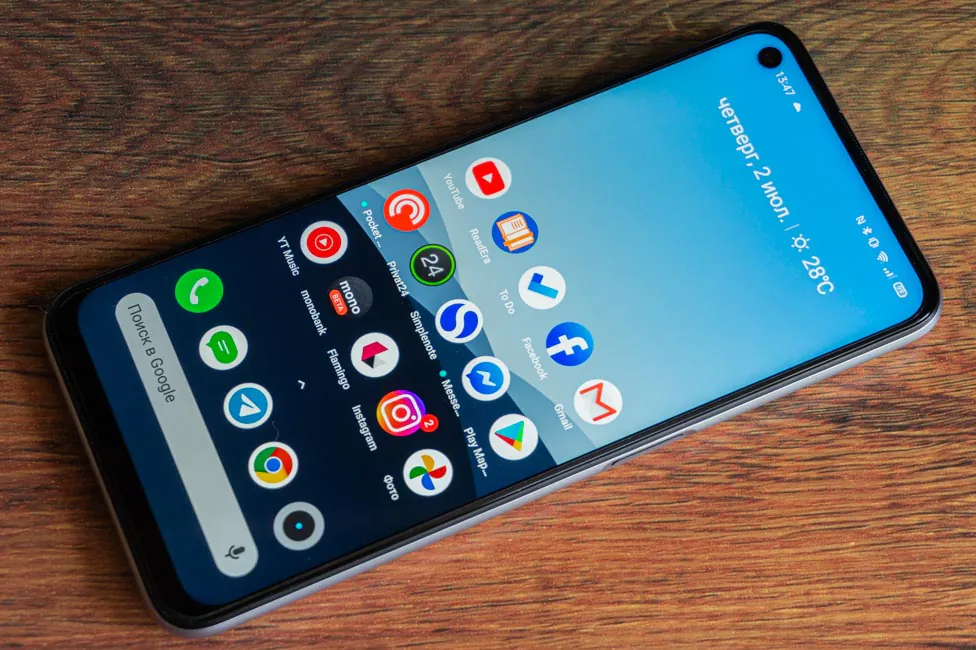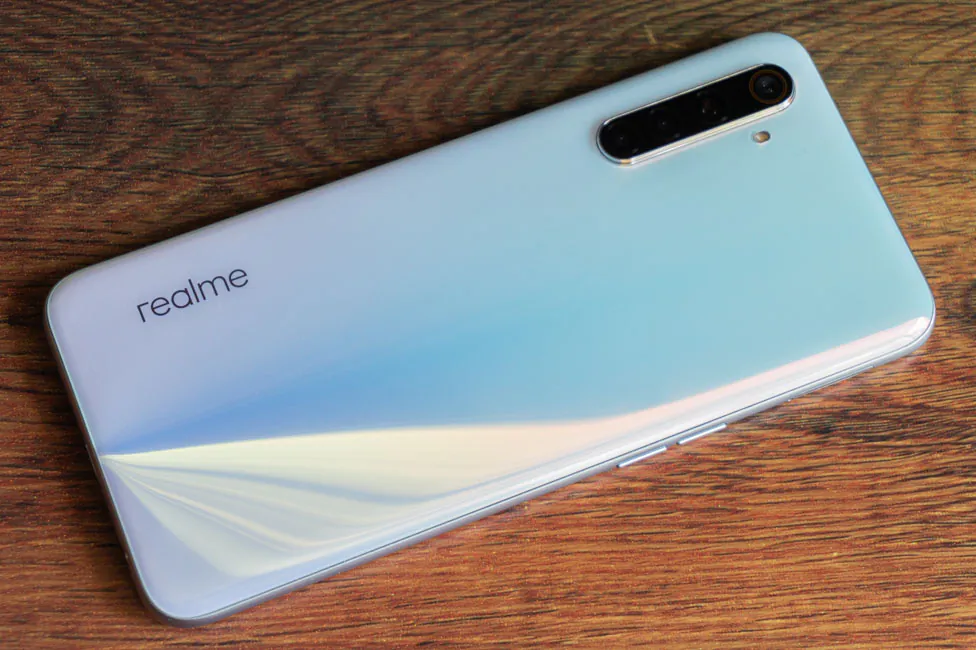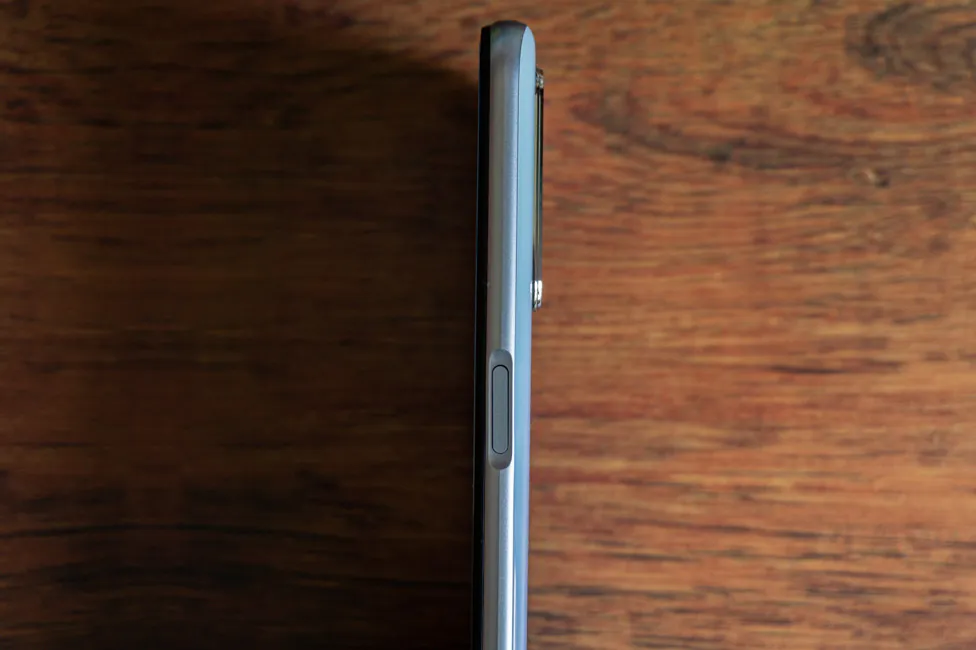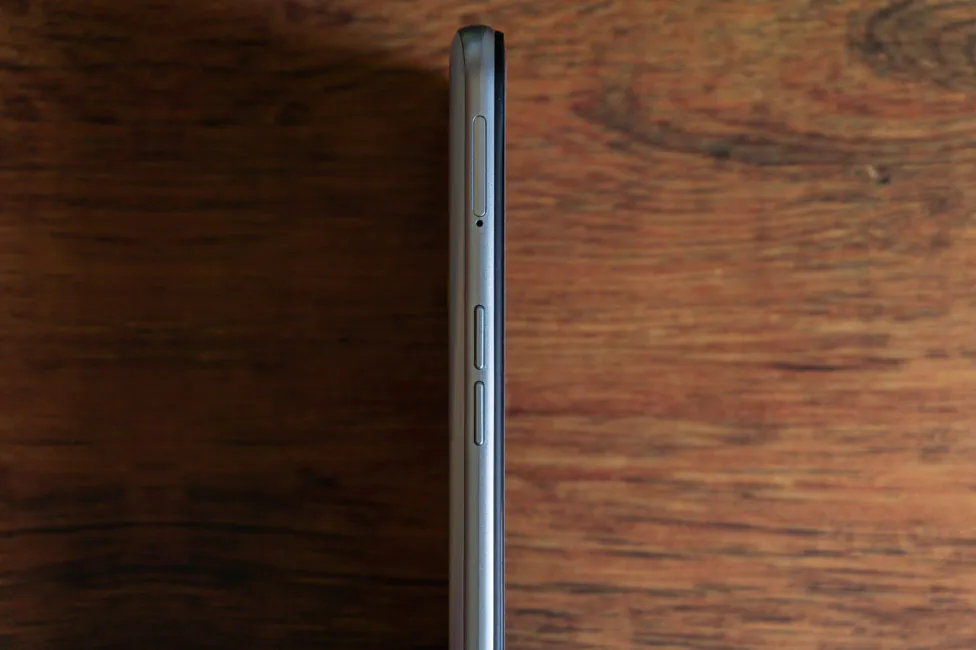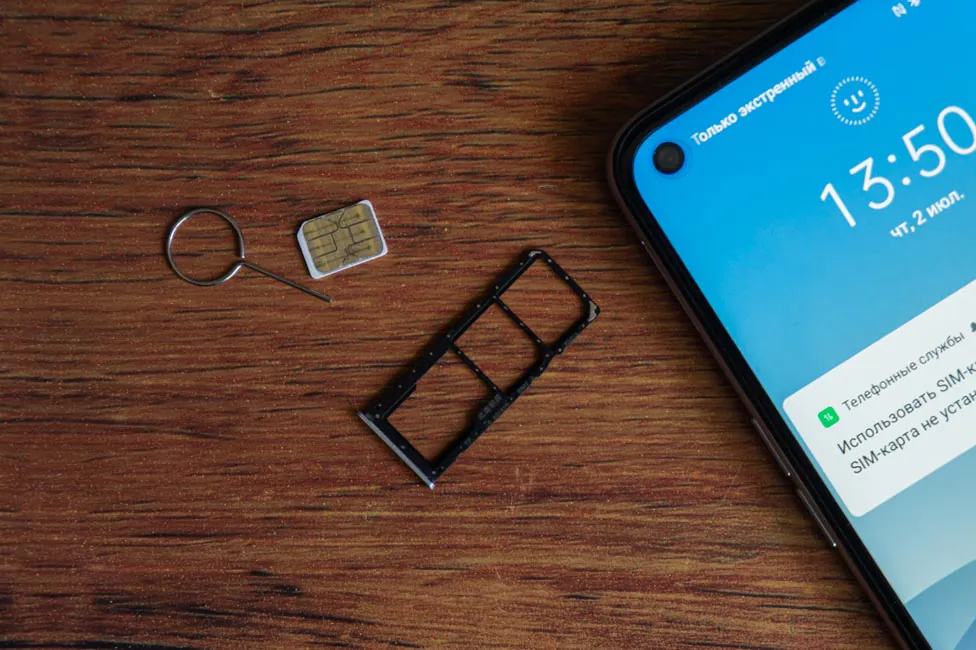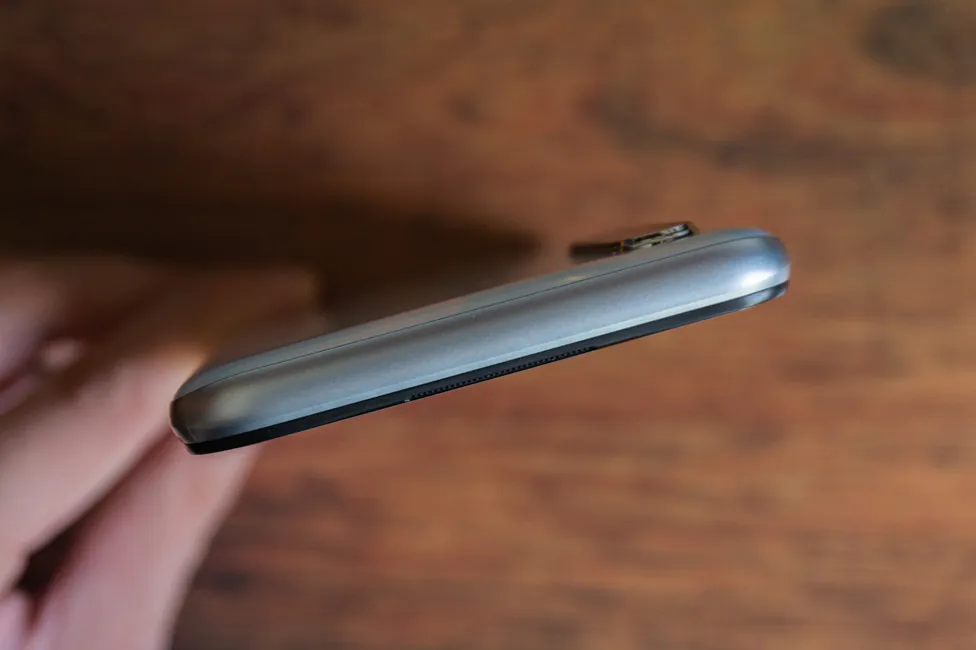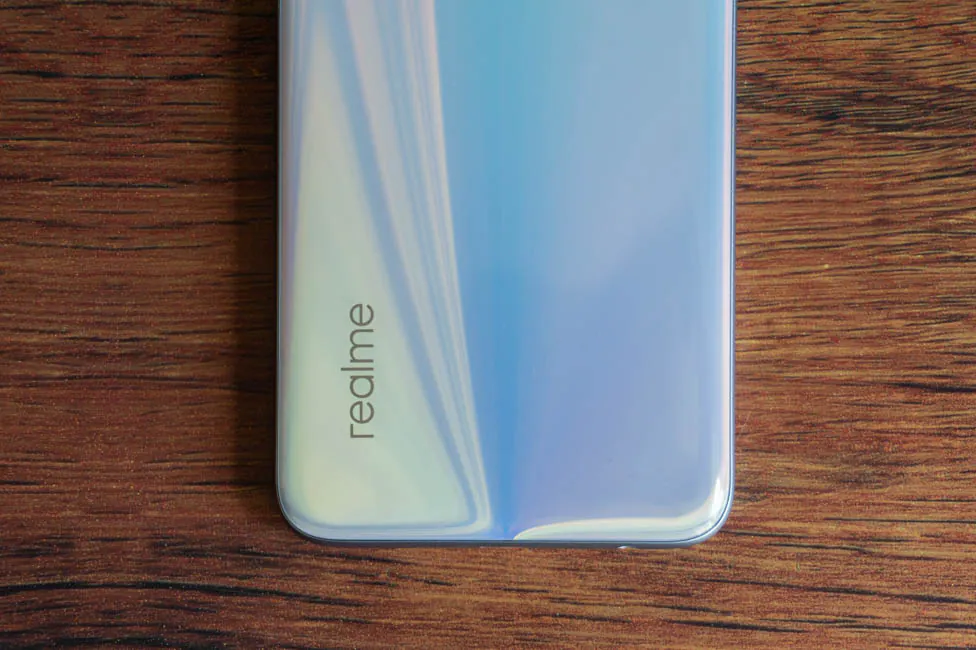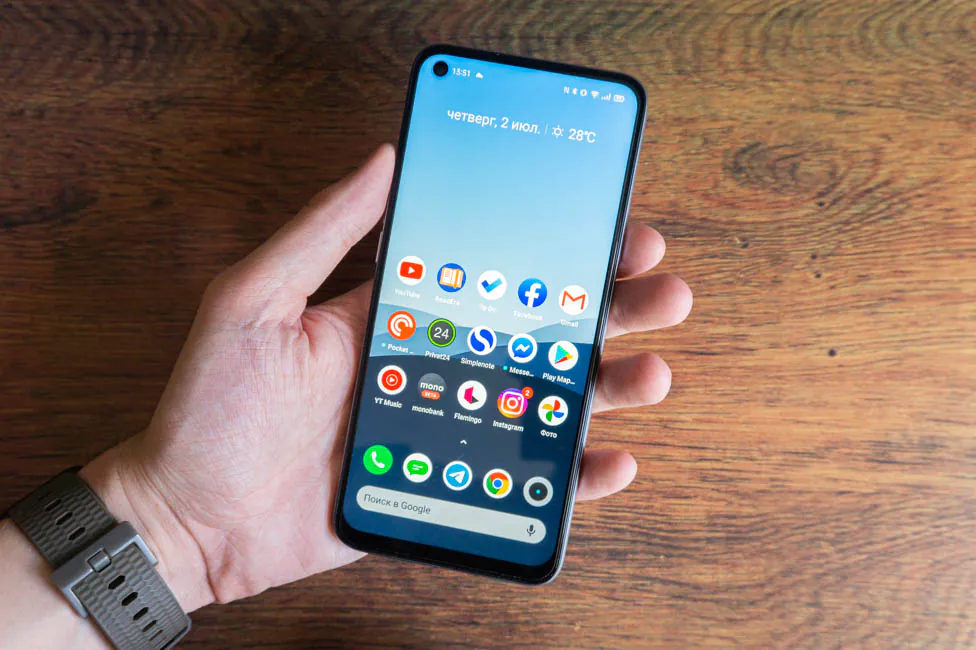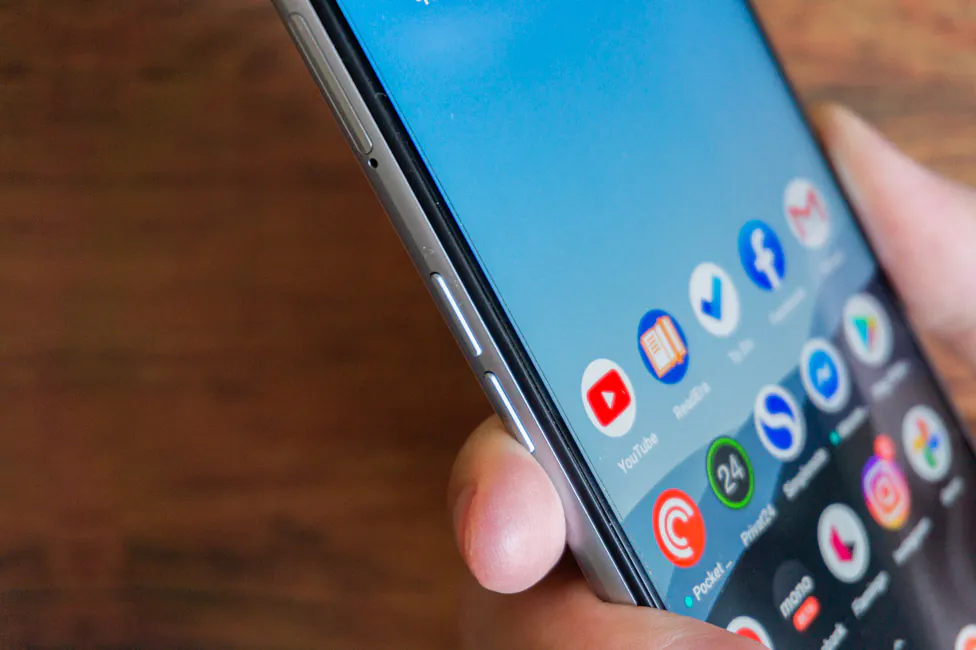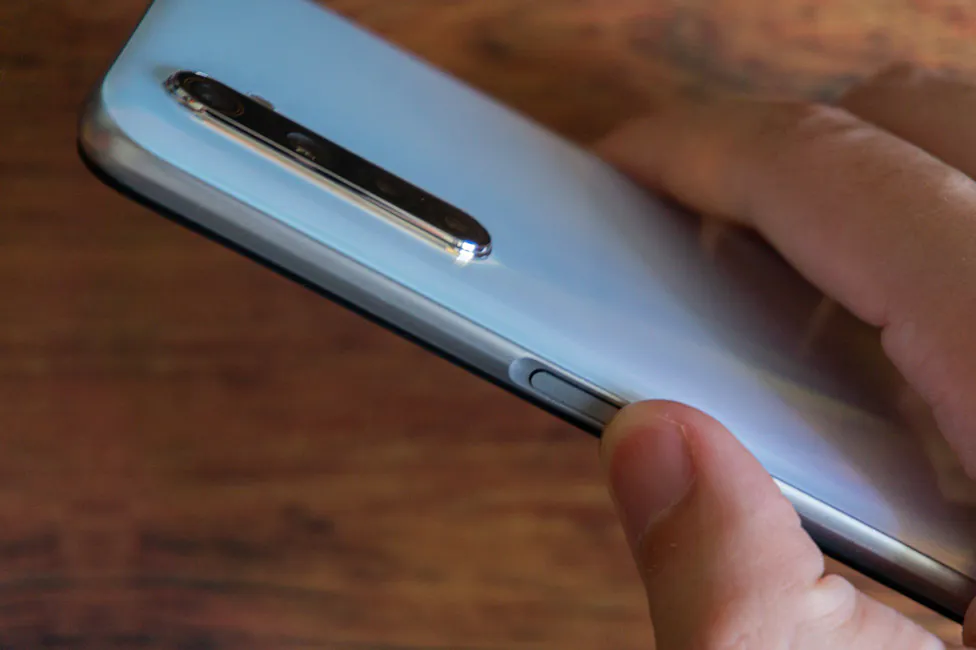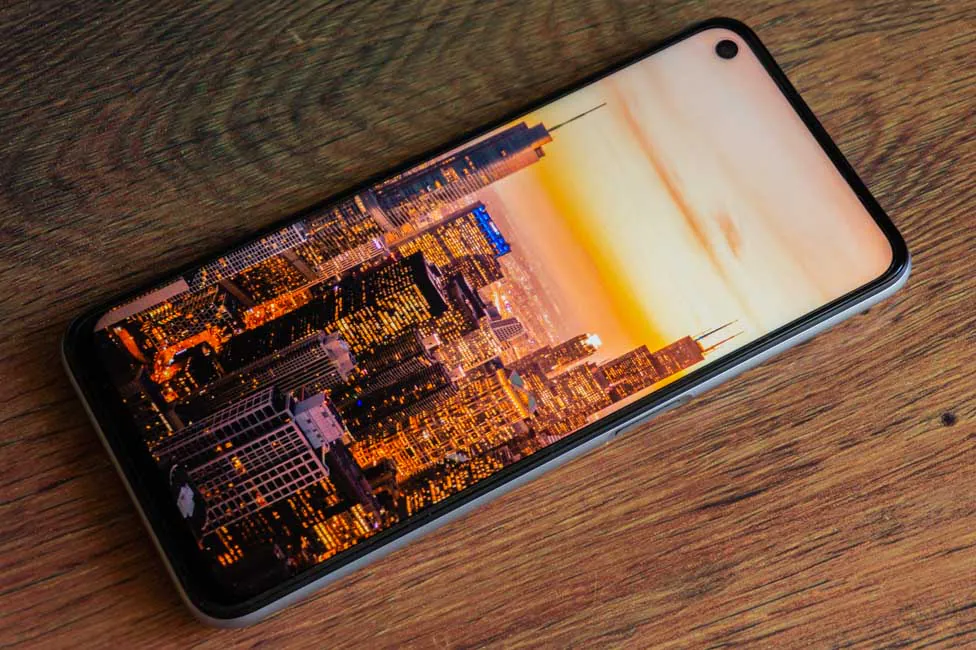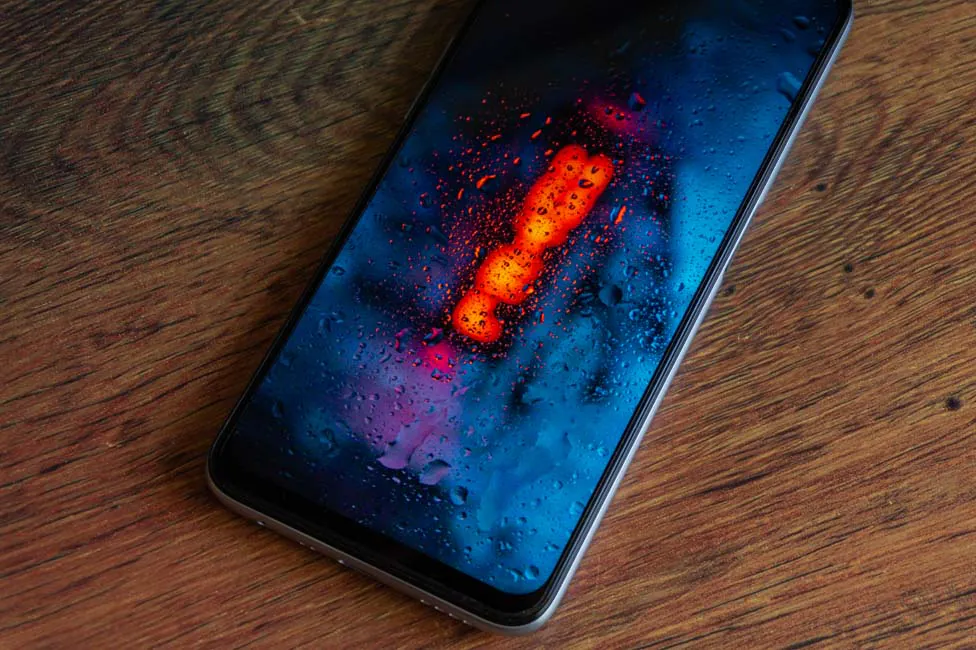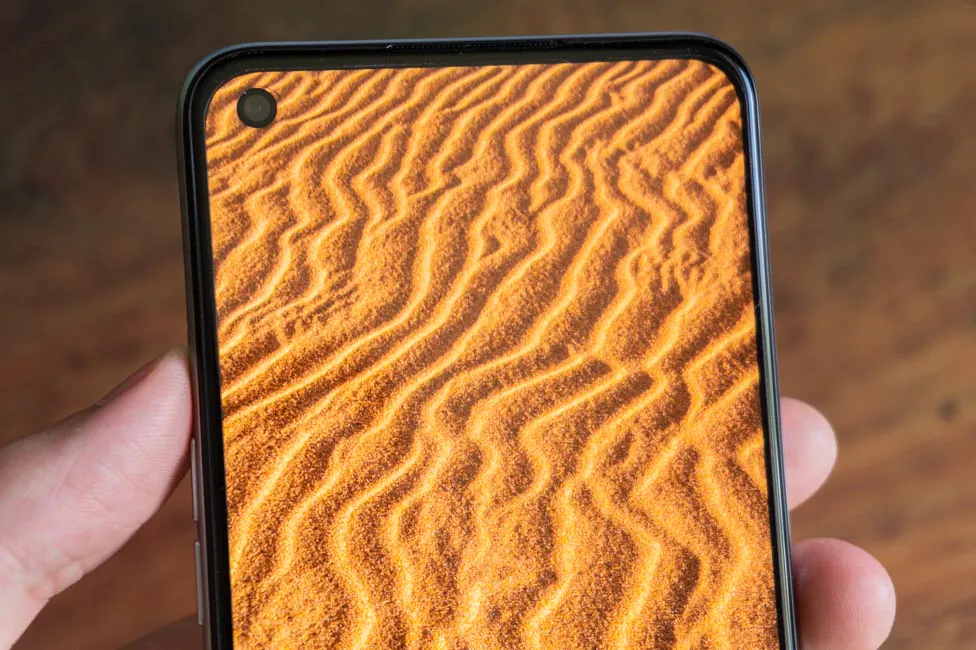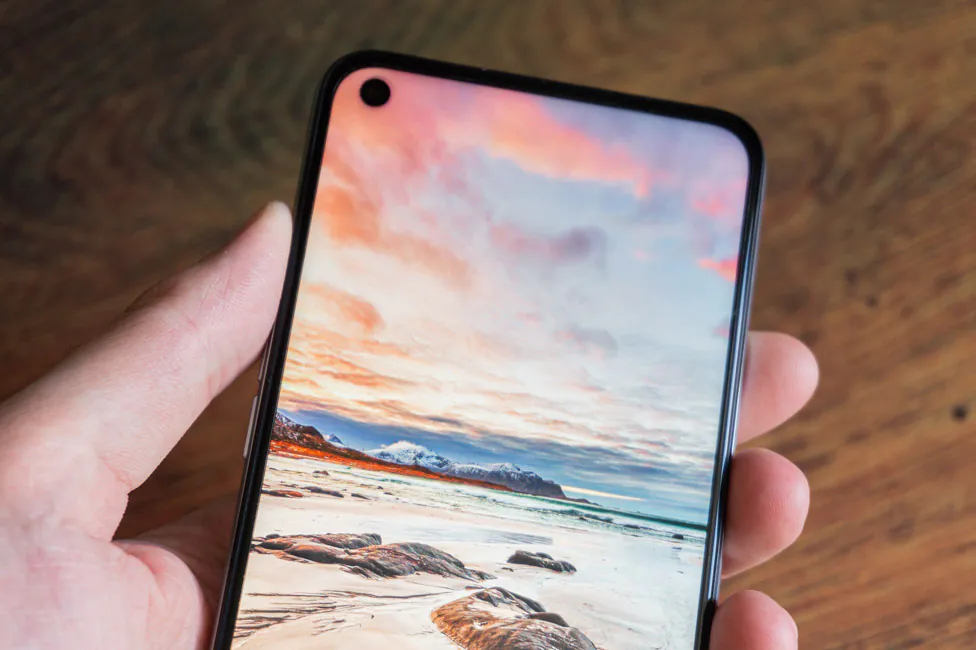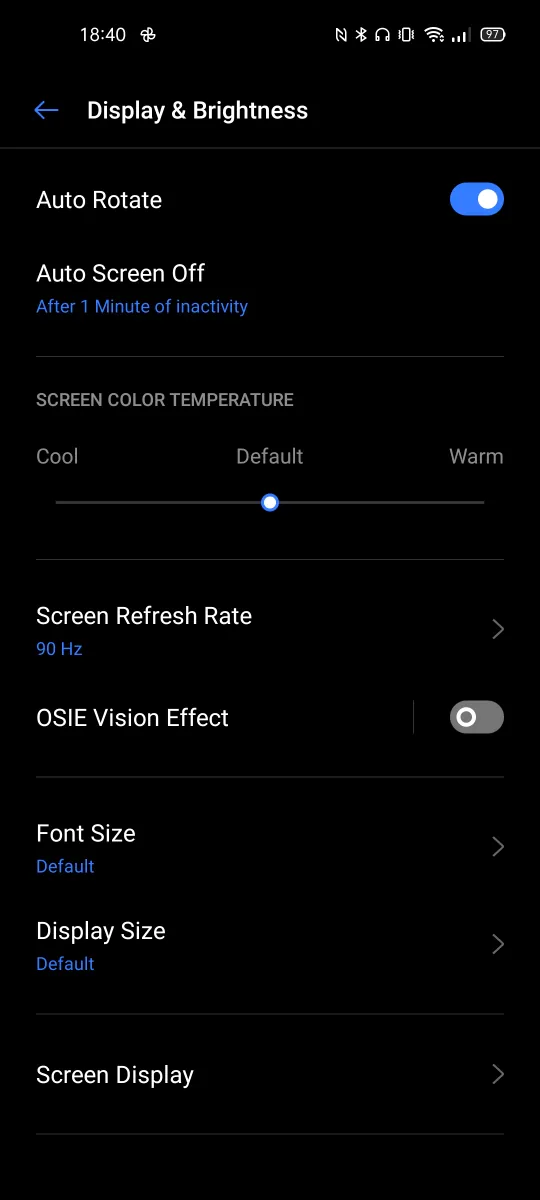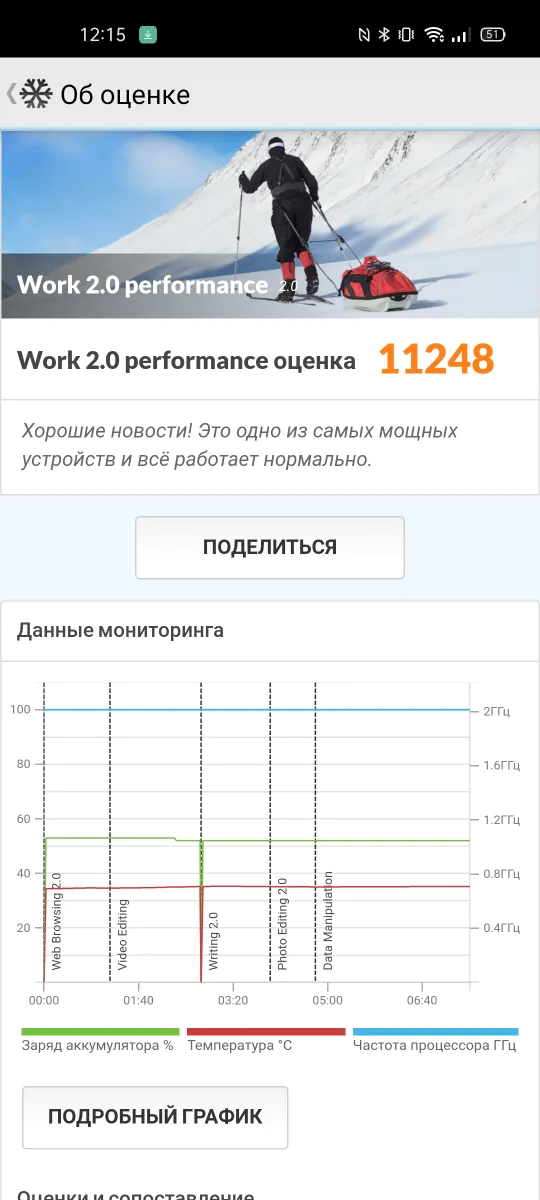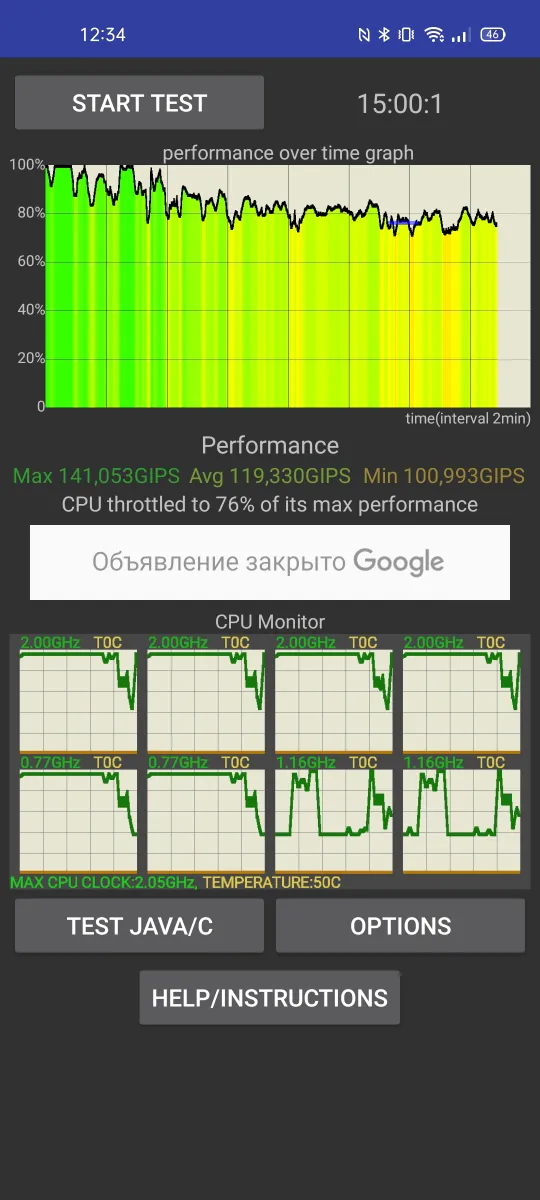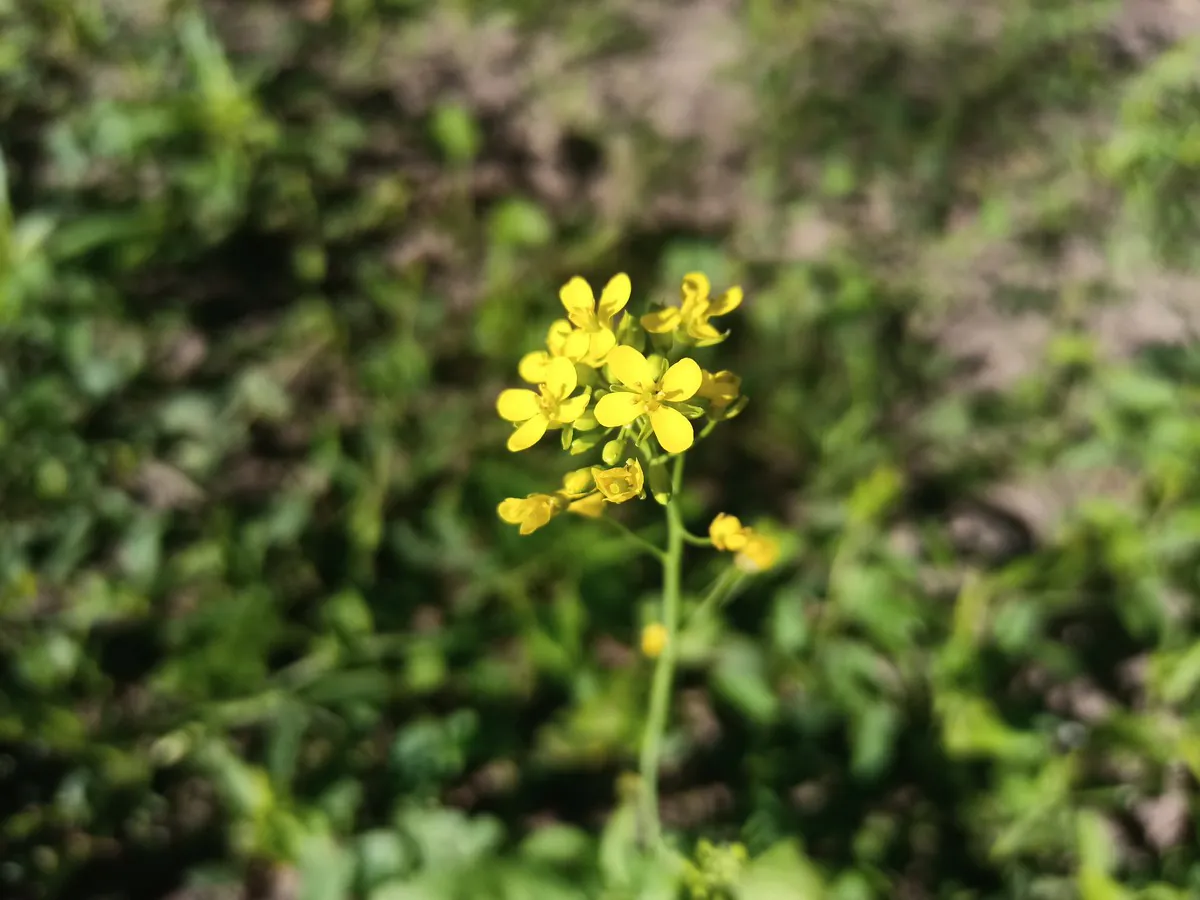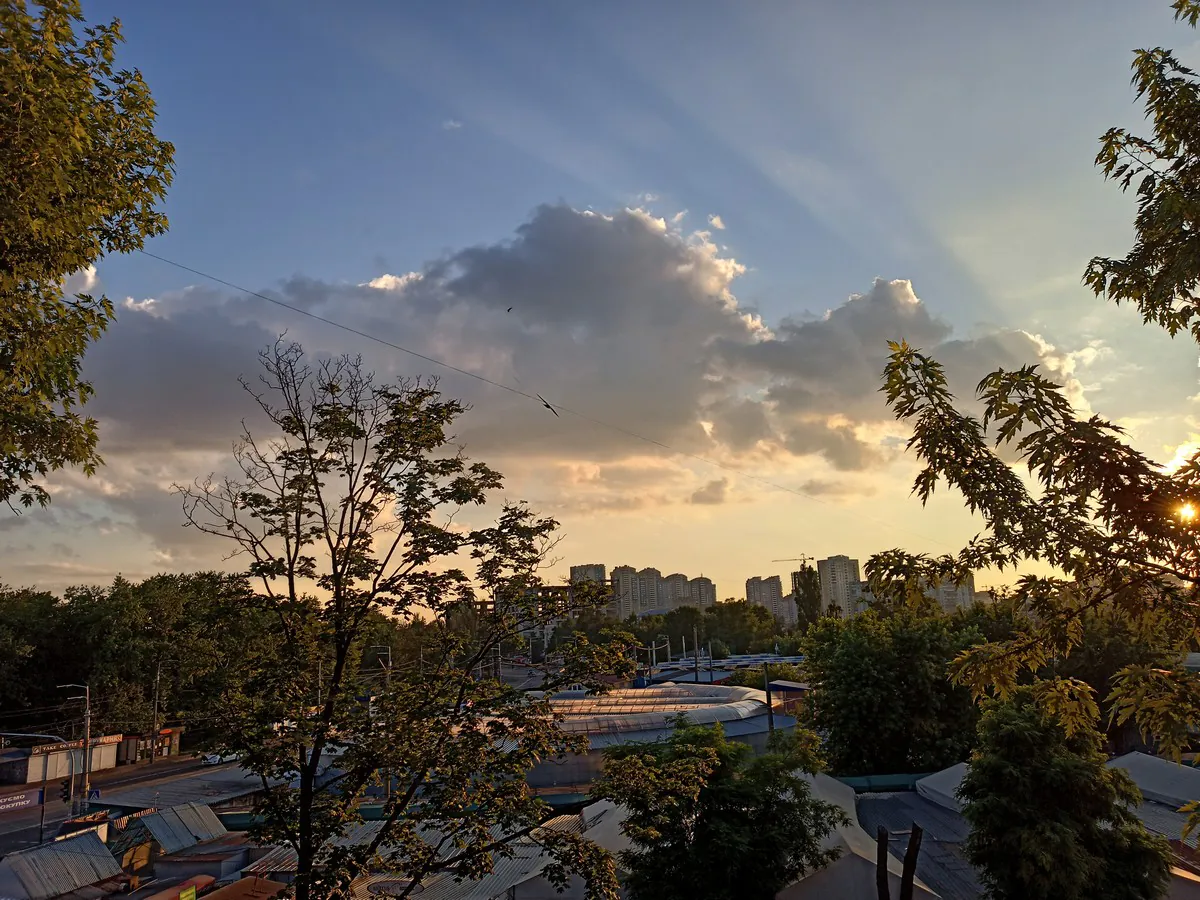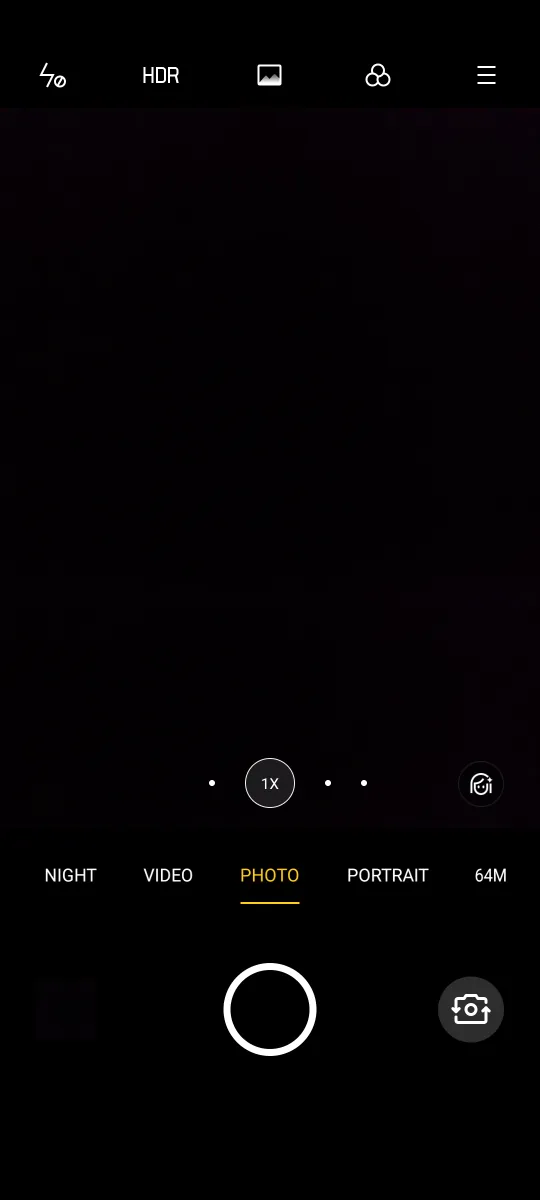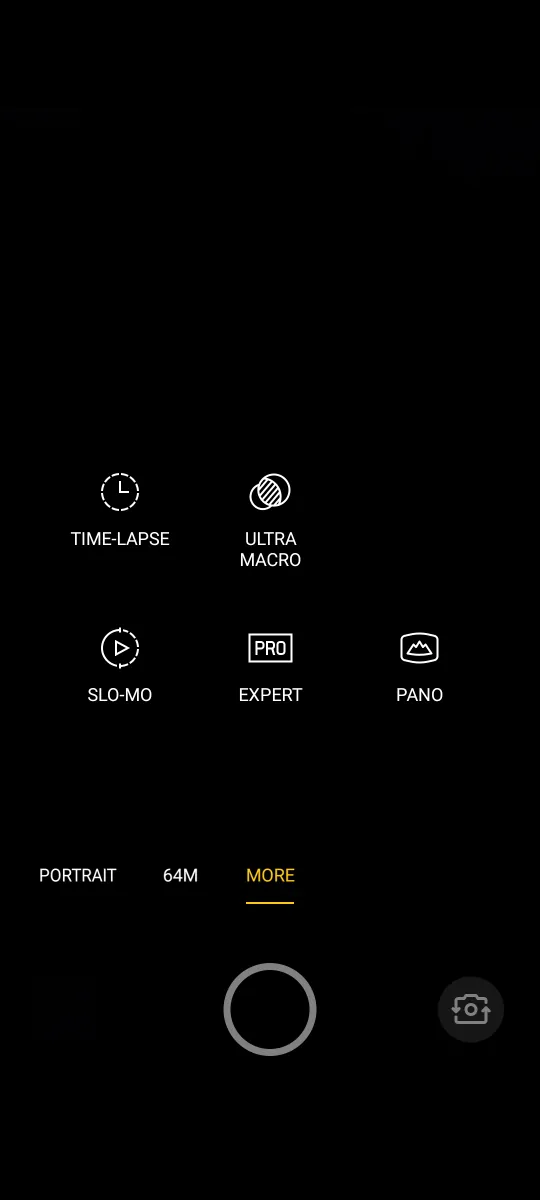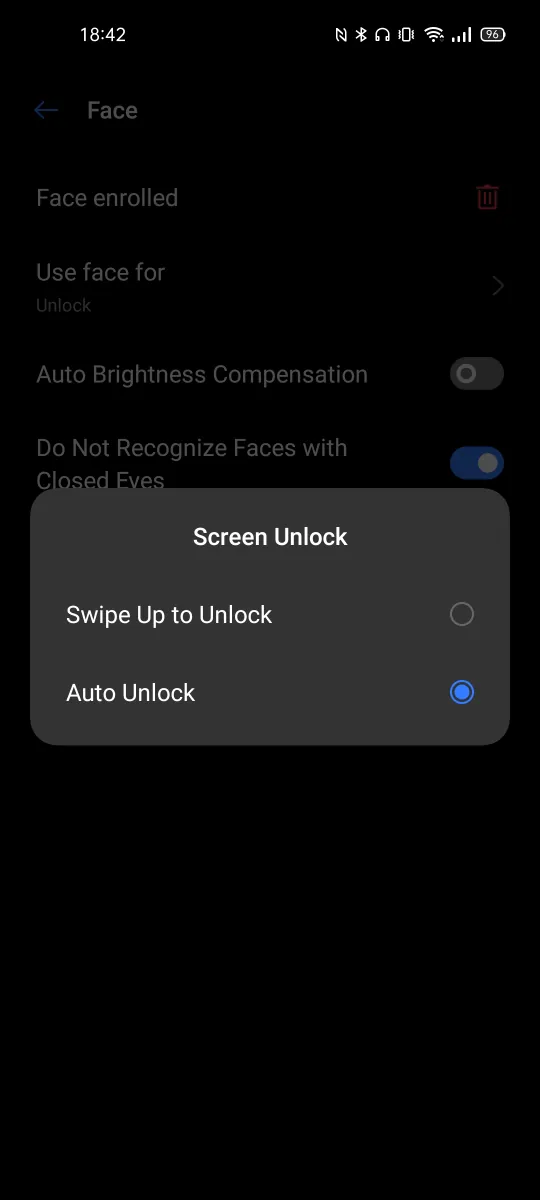© ROOT-NATION.com - Use of content is permitted with a backlink.
Let’s talk about the Realme 6 from the young brand Realme. The company is owned by BBK Electronics along with the likes of Vivo, OPPO, OnePlus and IQOO. Judging by the characteristics of the smartphone, we are dealing with a decent device. The numbers are fine, but how is the phone really? Let’s find out whether there are any hidden traps and pitfalls.
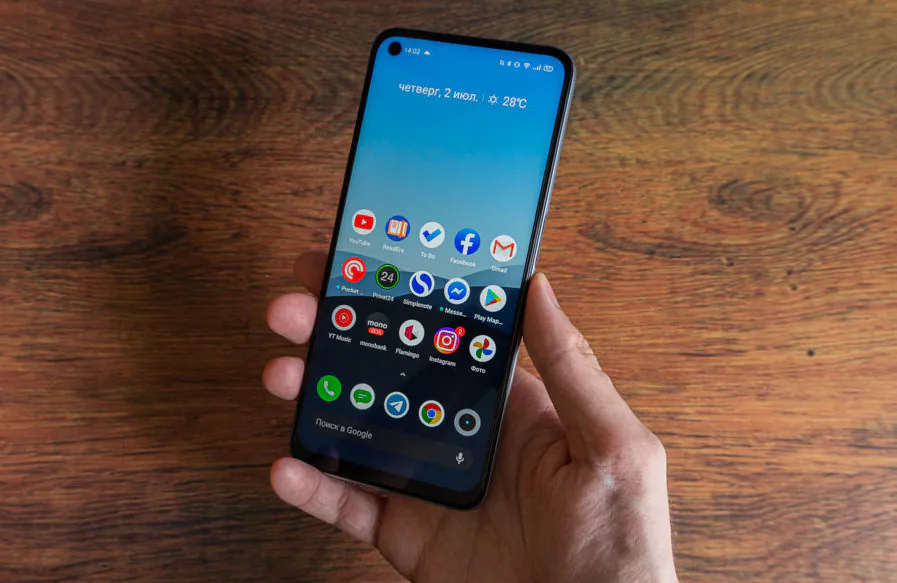
Realme 6 specs
| NETWORK | Technology | GSM / HSPA / LTE |
|---|
| LAUNCH | Announced | 2020, March 05 |
|---|---|---|
| Status | Available. Released 2020, March 11 |
| BODY | Dimensions | 162.1 x 74.8 x 8.9 mm (6.38 x 2.94 x 0.35 in) |
|---|---|---|
| Weight | 191 g (6.74 oz) | |
| Build | Glass front (Gorilla Glass 3), plastic back, plastic frame | |
| SIM | Dual SIM (Nano-SIM, dual stand-by) |
| DISPLAY | Type | IPS LCD capacitive touchscreen, 16M colors |
|---|---|---|
| Size | 6.5 inches, 102.0 cm2 (~84.1% screen-to-body ratio) | |
| Resolution | 1080 x 2400 pixels, 20:9 ratio (~405 ppi density) | |
| Protection | Corning Gorilla Glass 3 | |
| 480 nits typ. brightness (advertised) 90Hz refresh rate |
| PLATFORM | OS | Android 10, Realme UI |
|---|---|---|
| Chipset | Mediatek MT6785 Helio G90T (12 nm) | |
| CPU | Octa-core (2×2.05 GHz Cortex-A76 & 6×2.0 GHz Cortex-A55) | |
| GPU | Mali-G76 MC4 |
| MEMORY | Card slot | microSDXC (dedicated slot) |
|---|---|---|
| Internal | 64GB 4GB RAM, 128GB 4GB RAM, 128GB 6GB RAM, 128GB 8GB RAM | |
| UFS 2.1 |
| MAIN CAMERA | Quad | 64 MP, f/1.8, 26mm (wide), 1/1.72″, 0.8µm, PDAF 8 MP, f/2.3, 13mm (ultrawide), 1/4.0″, 1.12µm 2 MP, f/2.4, (macro) 2 MP B/W, f/2.4, (depth) |
|---|---|---|
| Features | LED flash, HDR, panorama | |
| Video | 4K@30fps, 1080p@30/60/120fps, gyro-EIS |
| SELFIE CAMERA | Single | 16 MP, f/2.0, 26mm (wide), 1/3.06″, 1.0µm |
|---|---|---|
| Features | HDR, panorama | |
| Video | 1080p@30fps |
| SOUND | Loudspeaker | Yes |
|---|---|---|
| 3.5mm jack | Yes |
| COMMS | WLAN | Wi-Fi 802.11 a/b/g/n/ac, dual-band, Wi-Fi Direct, hotspot |
|---|---|---|
| Bluetooth | 5.0, A2DP, LE | |
| GPS | Yes, with A-GPS, GLONASS, BDS | |
| NFC | Yes (market/region dependent) | |
| Radio | FM radio | |
| USB | 2.0, Type-C 1.0 reversible connector, USB On-The-Go |
| FEATURES | Sensors | Fingerprint (side-mounted), accelerometer, gyro, proximity, compass |
|---|
| BATTERY | Non-removable Li-Po 4300 mAh battery | |
|---|---|---|
| Charging | Fast charging 30W, 100% in 55 min (advertised) |
| MISC | Colors | Comet Blue, Comet White |
|---|---|---|
| Models | RMX2001 |
Price and positioning
Realme 6 is available with a different amount of RAM and storage and the price tag varies depending on the amount of memory. There are four modifications in total: 4/64 GB, 4/128 GB, 6/128 GB and 8/128 GB.
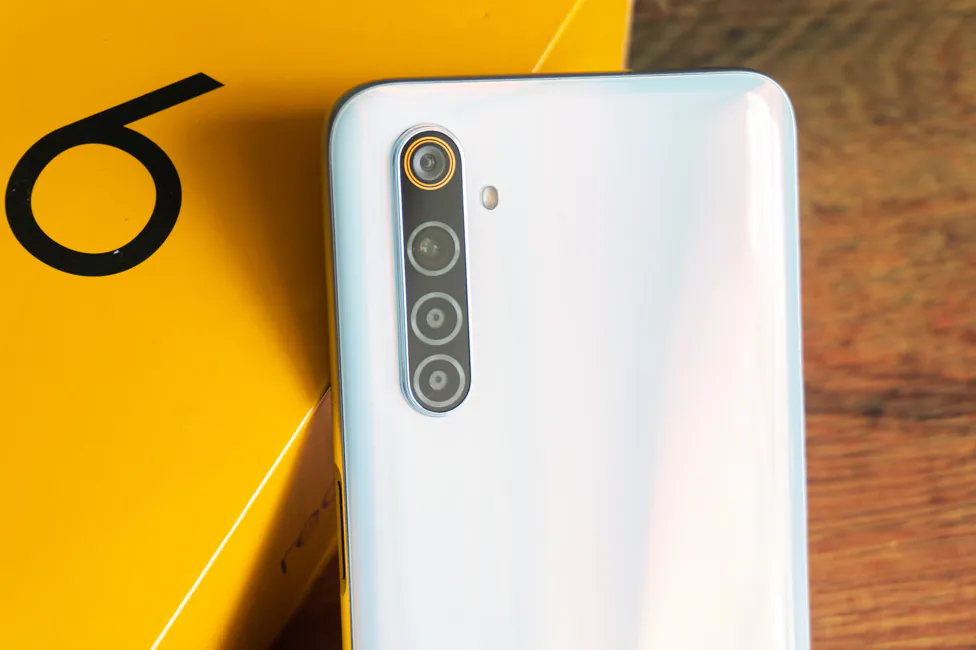
Price tags start from $205 for the basic version (4/64 GB). The average (4/128) will cost $223, but the top-end (with 8/128 GB) version costs up to $260. Let’s figure out what the manufacturer offers for this money.
What’s in the box
Realme 6 comes in a relatively large cardboard box in the brand’s yellow color. Inside we find a smartphone, as well as a 30 W power adapter, a USB/Type-C cable, a translucent silicone case, a SIM card eject tool and the usual manuals.
In addition, a protective film is also glued to the device itself. The bundled case does not stand out, as usual. But at least it’s there and it reliably protects the protruding cameras. In other words, it does its job.
Design, materials and build quality
Each medal, as you know, has two sides. The same can be said about the design of Realme 6. Its front looks modern enough. There is no boring teardrop-shaped notch in the center, but a hole in the upper left corner of the screen.

Yes, it’s also not new, but it’s much more trendy. The bezels on the sides and the top are relatively thin. Only the lower area has an increased height. This is one side of the Realme 6.
Now, the other side is represented by the cameras that are arranged in a column. We’re talking typical elongated shape that’s located in a no less familiar place – the upper left corner. No trendy squares or rounded rectangles for you. It’s okay… for some people.
What else is there? Colour. I have a white smartphone. It looks… fine, I guess. Of course, nothing extraordinary, but not dull either. There is an iridescent effect in the form of a gradient, yellow-orange strip. It originates in the center of the lower part and spreads across the entire back panel.
The frame around the perimeter is silver. It imitates metal, but in fact it is plain plastic. On the other hand, metal has not been used by manufacturers in this segment for a long time, so we probably can’t blame Realme for this.
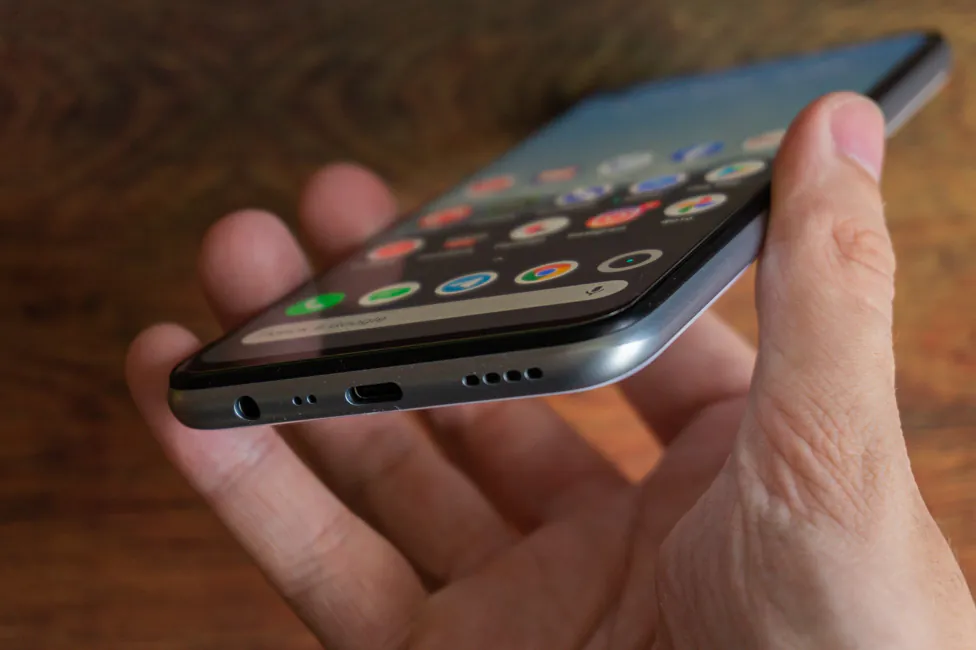
Now, the back is much worse. I expected glass, but got plastic. The front uses Corning Gorilla Glass 3. But I can’t find fault with the build quality. The phony feels monolithic and sturdy. No dust and moisture protection has been declared by the manufacturer.
In addition to the White Comet, there is also a blue model on sale, with a brighter and more noticeable gradient. Frankly, I miss the Realme 6 Pro lighting pattern.
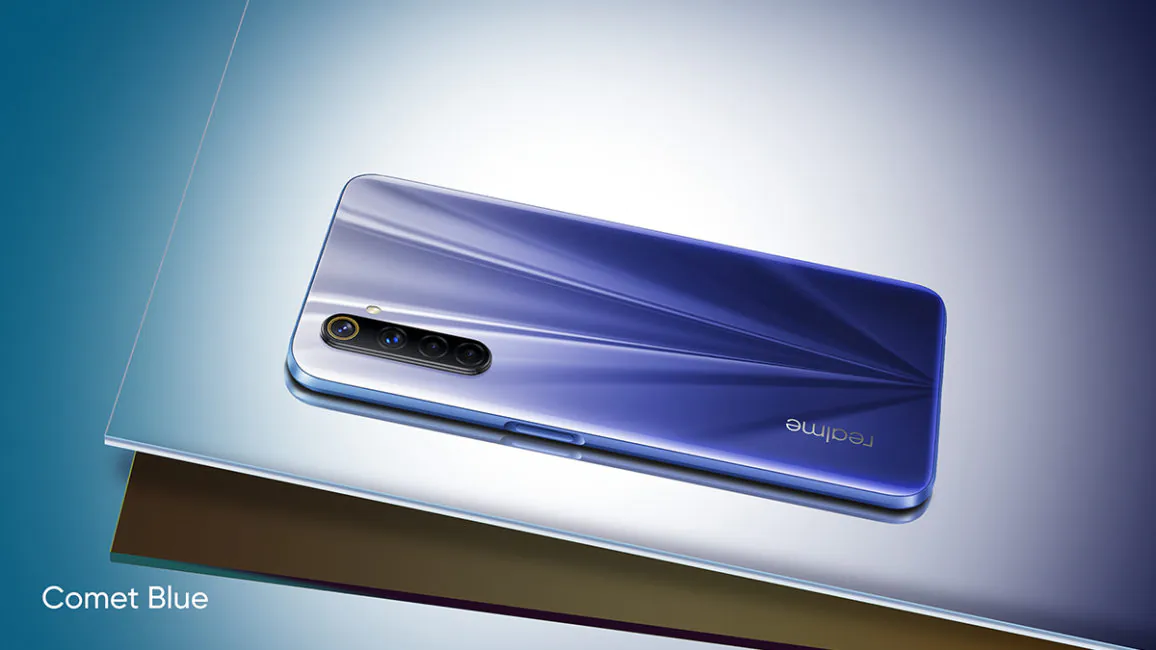
Elements configuration
There’s nothing unusual here. Front to top – the front camera, the earpiece speaker and light and proximity sensors. At the bottom there’s nothing, not even an LED indicator.
On the right side is the power button, combined with a fingerprint scanner. On the left are two separate volume up and down keys, as well as a combined slot for two nano SIM cards and a microSD memory card.
There is nothing above, because all the necessary elements are located on the bottom. Namely: a 3.5 mm audio jack, a microphone (or maybe microphones, because there are two holes), a Type-C port and slots for a multimedia speaker.
Behind we observe a block with four camera eyes and focusing system sensors, and to the right of it is a flash. At the bottom there is only the Realme logo.
Ergonomics
The dimensions of the Realme 6 are not the most compact: 162.1 × 74.8 × 8.9 mm. The mass of the device is 191 grams. Of course, it is impossible to use it with one hand without changing the grip.
But the device can be praised for the quite convenient shape of the case and the placement of keys. Not only are they on different sides, they are also at an optimum height for comfortable use. People who usually prefer bigger phones will be happy with the ergonomics here.
Realme 6 display
Realme 6 has a 6.5-inch Full HD+ (2400×1080) IPS display with 20:9 aspect ratio, and a pixel density of 405 ppi. But its main feature is the refresh rate of 90 Hz, a rarity in this segment.
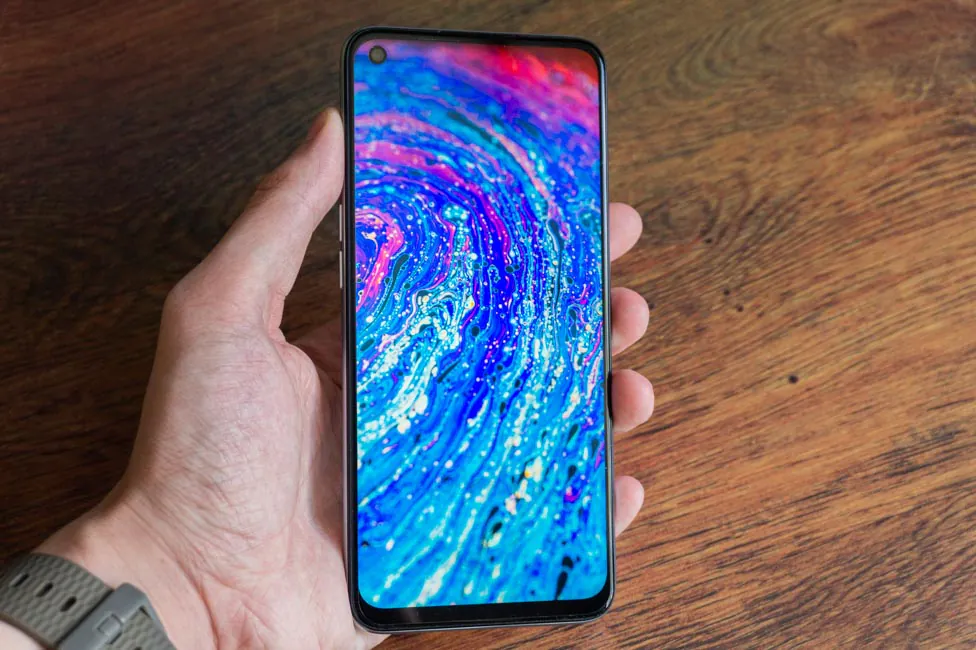
Such refresh rate can be found in the Xiaomi Mi 10 Pro and the Huawei P40 Pro. Right now the Realme 6 is the most affordable smartphone with this feature.
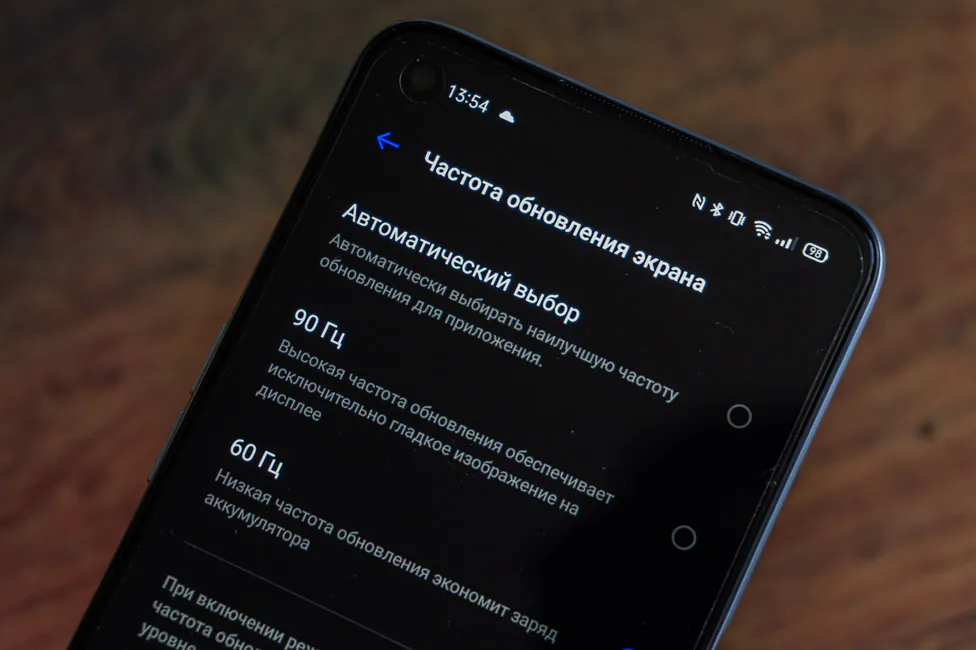
The screen itself is great – the “correct” resolution, good color rendition without oversaturated colors, but not dull. Viewing angles are traditional for this kind of panel. No distortion with linear deviations is observed, there is only a typical fading of darker colors when viewed diagonally.
Everything seems to be fine, but in my opinion the maximum brightness is not enough. It is enough for a room or in a shadow, but on a bright sunny day the information from the display is difficult to read.
Regarding 90 Hz – this is a cool feature, the difference in smoothness compared to the standard 60 Hz is visible to the naked eye. But you must understand that not everywhere and not always these 90 Hz will work. The shell, some social networks – everything will be fine, but the games, for example, don’t support it.
In the settings we find the dark theme, eyesight protection, color temperature adjustment, frequency selection (60/90 Hz or auto) and OSIE visual effect – increasing picture saturation in supported applications. Also: forced full-screen mode and the selfie camera masking option.
Almost all games are not displayed on the whole screen by default and, accordingly, there is a black bar at the top. This setting allows us to change this. Just make sure that the camera will not overlap important element of the game.
The Realme 6 Performance
Unlike its brother, the Realme 6 Pro, the Realme 6 uses a chipset not from Qualcomm, but from Mediatek. Namely, Mediatek MT6785, aka Helio G90T. This is an 8-core platform with 2 Cortex-A76 cores with a maximum clock speed of up to 2.05 GHz and 6 Cortex-A55 cores with a clock frequency of up to 2.0 GHz. The graphics accelerator in the smartphone is the Mali-G76 MC4.
As previously reported, there can be 4, 6 or 8 GB of RAM. LPDDR4x. I tested the model with 8/128 GB. 8 gigs for this kind of chipset is more than enough. I also think that there will be no problems with the basic configuration. Yes, multitasking will be worse, but it’s a good deal regardless.
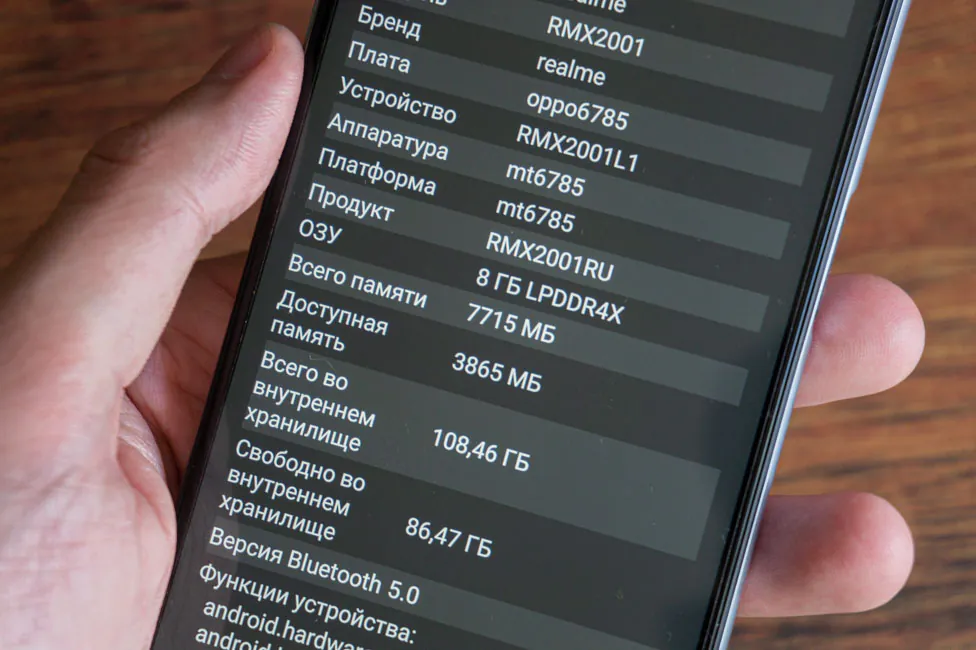
The storage can be either 64 or 128 GB (UFS 2.1). The top revision has 108.27 GB free. But do not forget that storage can be easily expanded with the help of a microSD memory card up to 256 GB.
In real life the hardware performs admirably. The smartphone is quick, animations look smooth, especially at 90 Hz, and in general, there are no issues at all regarding the performance of the shell. With games, everything is also quite normal. The Realme 6 will run almost anything, but not on highest settings, of course. Something will have to be lowered and some effects must be disabled to help the frame rate.
Here are measurements in several titles on the highest possible graphics settings. I used Gamebench.
- PUBG Mobile – maximum graphics settings with smoothing and shadows, an average of 38 FPS
- Shadowgun Legends – ultra-graphics, an average of 33 FPS
- Call of Duty Mobile – very high, depth of field, shadow, Ragdoll, “Battlefront” mode is ~ 30 FPS; Battle Royale is ~ 17 FPS
It’s good for gaming, but I would recommend lowering the parameters a little. And here’s another point – there is throttling. After some time FPS drop sharply for several seconds, for around 10-15 seconds, after which it normalizes again, but in the future such drawdowns occur periodically. Perhaps this flaw will be corrected with updates.
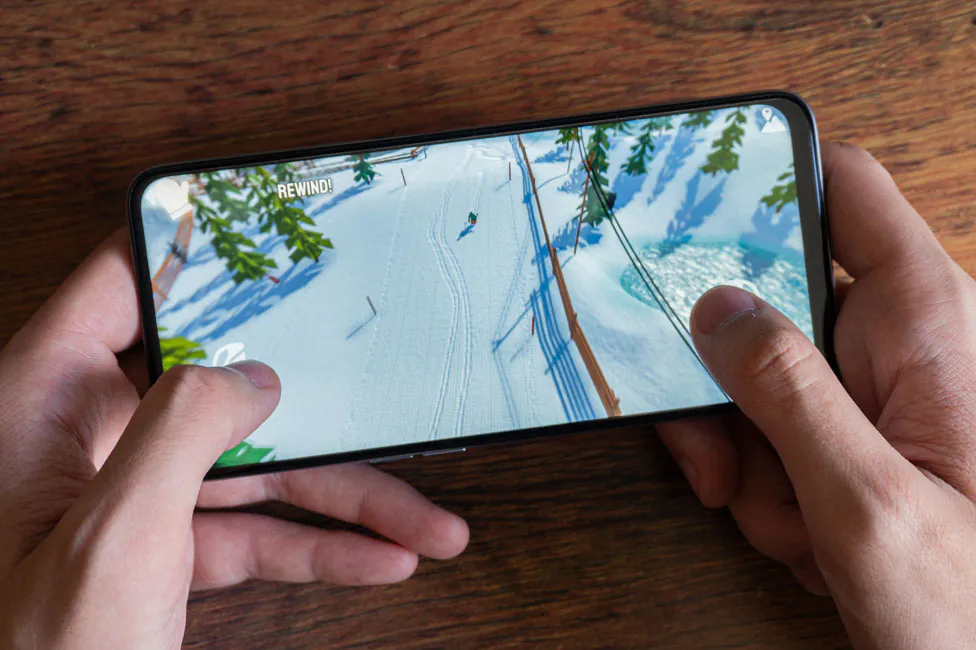
Realme 6 cameras
There are four cameras in the main unit of Realme 6:
- 64 MP, f/1.8, 26mm (wide), 1/1.72″, 0.8µm, PDAF
- 8 MP, f/2.3, 13mm (ultrawide), 1/4.0″, 1.12µm
- 2 MP, f/2.4, (macro)
- 2 MP B/W, f/2.4, (depth)

The main camera is 16 megapixels, but you can make use of 64 megapixel resolution if you want – there is a separate mode for this in the camera application. Photos look similar, but there are noticeably more details in the “heavier” pictures, but they take up much more storage.
Daytime photographs on this camera turn out good – normal detail and colors, although sometimes the white balance is strange. But in general, everything is not bad, you can make a high-quality photo in appropriate conditions. Night photos are noticeably worse: you get noises, weak details and so on. It gets a little better in night mode, which, fortunately, is here. For example, more information is visible in dark areas. In general, the smartphone does not cope with particularly complex scenes, but this is an ordinary situation in for this price segment.
PHOTO EXAMPLES IN FULL RESOLUTION FROM THE MAIN CAMERA
There is no telephoto module, even though the Realme 6 Pro had it, but you can use the digital zoom (2 and 5x). 2x zoom can be useful, but the 5x zoom is as good as you might expect.
An ultra-wide camera takes mediocre photos and even in ideal lighting conditions they clearly lack detail. The edges of photos come out a little blurry. Overall, the ultra wide module is not very good and I can’t really say anything positive about it. It’s just there and if the conditions allow, it allows you to photograph something. But do not expect outstanding results.
PHOTO EXAMPLES IN FULL RESOLUTION FROM THE ULTRA-WIDE CAMERA
The macro camera… technically is here. The focus is fixed, the distance between the lens and the subject there should be about 4 cm, so that the scene is in focus. But still, due to the low resolution and pale colors, don’t expect good-looking photos.
PHOTO IN FULL RESOLUTION IN MACRO MODE
The smartphone records video in 4K at 30 fps (main camera) and Full HD at 30 fps (ultra-wide). Electronic stabilization is only available at Full HD resolution. The quality of the videos is quite alright.
16MP selfie camera with f/2.0 aperture, 1/3.06″ sensor and 1.0µm makes decent pictures and doesn’t butcher the skin tone. You can record Full HD video at 30 FPS.
The camera application has a basic set of options and modes, as well as scene recognition with subsequent image processing.
Unlocking methods
There are, of course, two of them in the smartphone: a standard capacitive fingerprint scanner in the power button on the right and unlocking with the front-facing camera. The first method works perfect. The scanner is insanely fast and extremely accurate. Plus, everything is located in an optimal location.
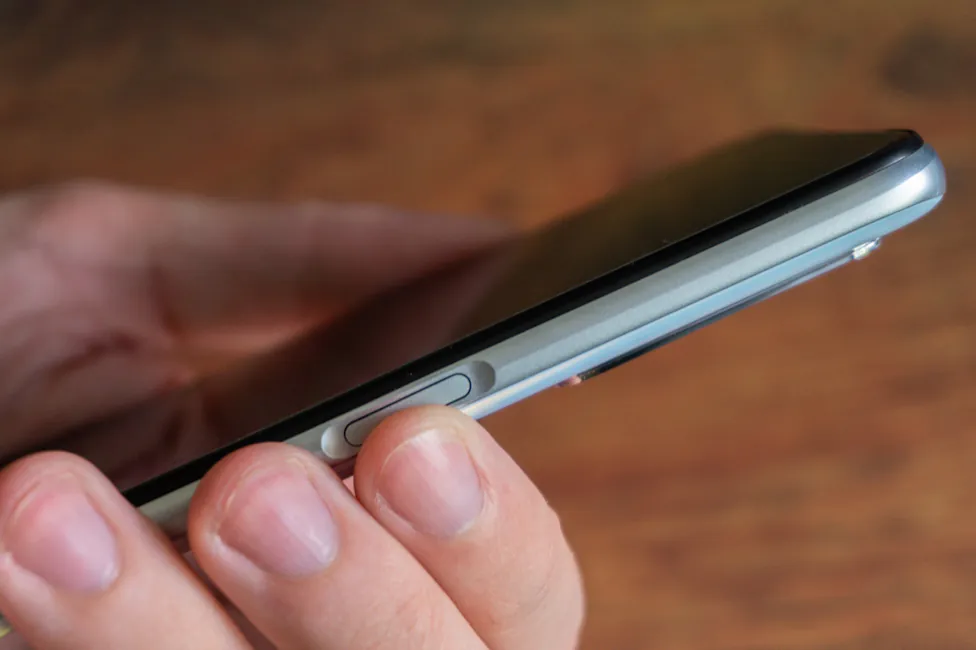
There are two ways to unlock, either by pressing the button or just touching it. What to choose? Well, if you only touch the scanner, the unlocking process is almost instantaneous, but sometimes the phone might turn on by mistake. Pressing the button requires more… effort, but there’ll be no errors.
Face recognition either works instantly or doesn’t work at all. 9 out of 10 times it works. You’ll need some light for it to recognize you. Otherwise, it won’t work at all. However, you can turn on the auto-brightness of the screen for additional illumination. But there will be some discomfort to the eyes, especially if you try to unlock in complete darkness.
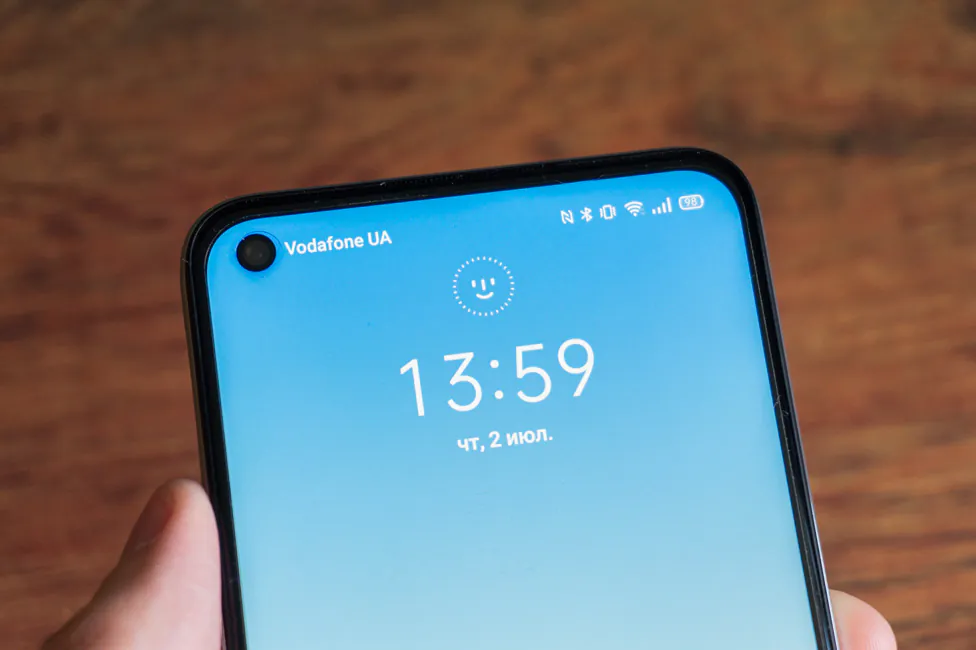
In addition to this function, there is an option in the settings in which the face will not be recognized if the user’s eyes are closed.
Realme 6 battery life
The smartphone is equipped with a 4300 mAh battery. Not amazing by any means – we’ve seen better. Nevertheless, the smartphone works for quite a while, even in the 90 Hz mode.

The smartphone survives for a whole day of active use. There are some energy settings that allow to prolong its life even further. On average, I got 6.5-7.5 hours from a single charge, which, I think, is not bad. Again, as for 4300 mAh and 90 Hz IPS display. In the PCMark Work 2.0 test, with maximum display brightness at 90 Hz, the phone worked for 6 hours 3 minutes.
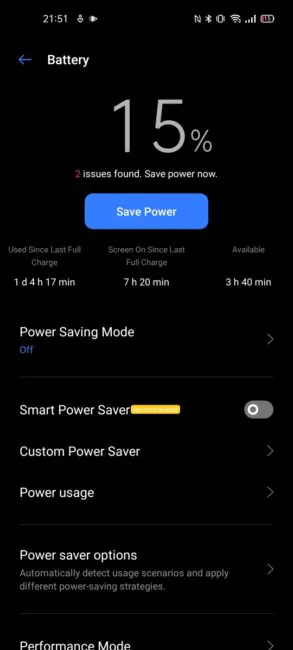
So yes, the battery life is fairly good. The charging speed as well. The bundled 30 W unit and cable fully charge the Realme 6 in about 55 minutes (these are the official numbers). But my measurements show slightly different numbers. But yes, it’s quick:
- 00:00 — 15%
- 00:10 — 33%
- 00:20 — 49%
- 00:30 — 64%
- 00:40 — 80%
- 00:50 — 91%
- 00:60 — 98%
Sound and communication
In terms of speakers, everything is fine – both quality and the sound are fine. The mono sound for media is expected. The volume is quite loud, but the quality is not amazing. However, in the headphones everything is far more decent – both with a wired connection, and via Bluetooth.
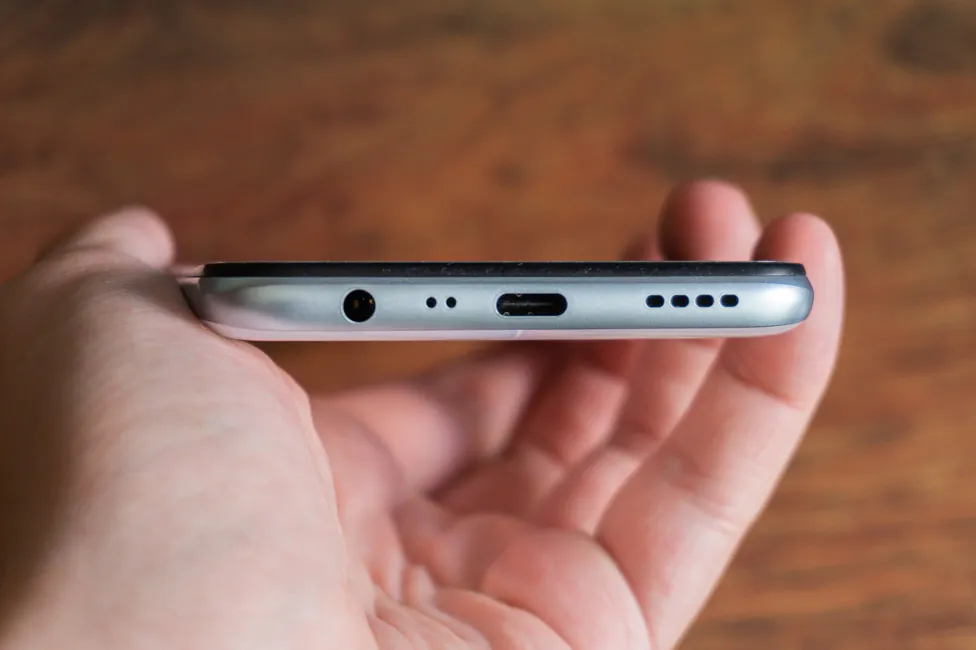
In the settings there is only Real Sound technology – a custom equalizer with presets.
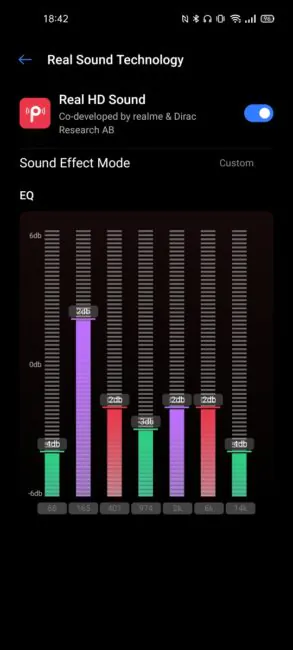
The Realme 6 supports all wireless networks: Dual-band Wi-Fi 5, Bluetooth 5.0 (A2DP, LE), GPS (A-GPS, GLONASS, BDS), NFC module. The network is stable, contactless payments work.
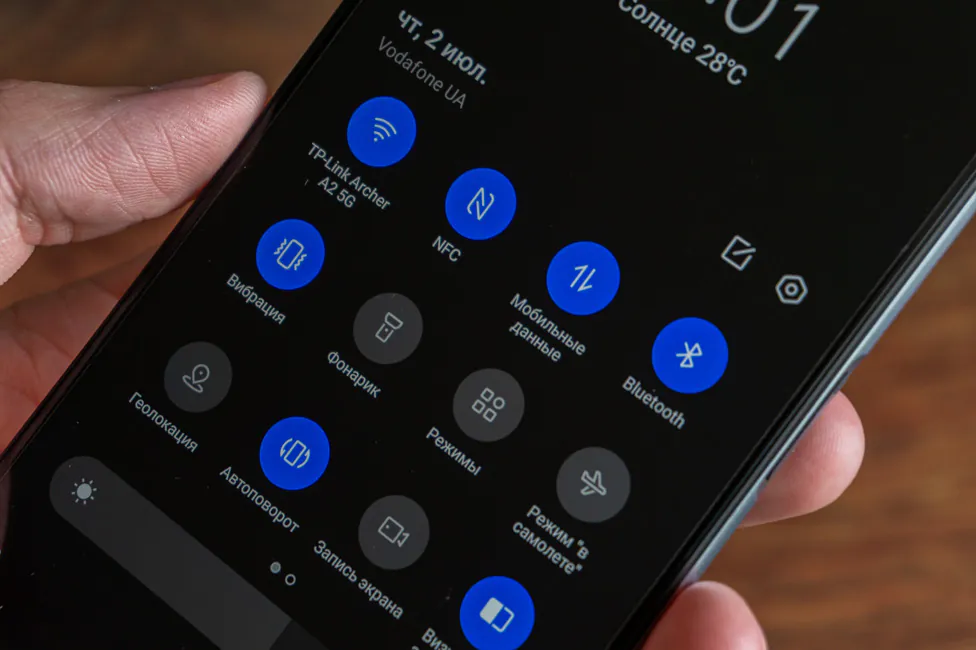
Firmware and software
The Realme 6 runs on Android 10 with the manufacturer’s proprietary shell called Realme UI 1.0. It’s actually a modern version of ColorOS 7.1. The set of functions may differ from device to device, the design of some elements is different, but the “skeleton” itself is essentially the same.
There are a lot of settings, especially when it comes to appearance. There are gestures, one-handed control mode, a sidebar with applications and shortcuts, cloning of programs, a game hub, and everything else that a user may need.
Verdict
Realme 6 is one of the best smartphones in its segment and it stands out from other devices thanks to several interesting features. This is a smartphone with a high-quality display and an increased refresh rate. The hardware can handle any task, the camera is not bad overall, there is a lightning-fast fingerprint scanner and decent battery, coupled with fast charging.
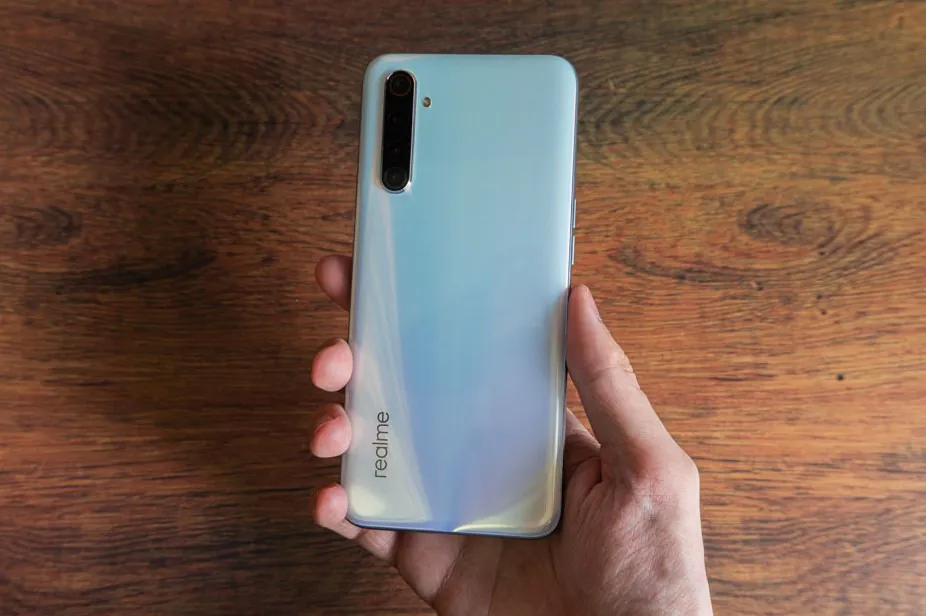
It’s really hard for me to highlight any weak points. If you are looking for a relatively inexpensive smartphone with good performance and features, pay attention to the Realme 6.
Subscribe to our accounts:


